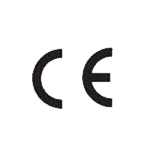The purpose of this test is to find out whether EPOM can absorb or degrade the heavy metals which are remain in the soil by using chemical fertilizer and pesticide for long period of time. This experiment uses EPOM powder at the size of 0.1-10um and put into the heavy metal solution (Lead Pb, Cadmium Cd, Chromium Cr at 50ppm) 2 grams each in order to find out how could EPOM decompose the heavy metal.
1). Experiment equipment and material:
A. 6 grams EPOM powder at size of 0.1-10μm. 2 grams for each heavy metal.
B. Heavy metal solution:
2 grams Lead (Pb) 50ppm,solution 1000cc,
2 grams Cadmium (Cd) 50ppm, solution 1000cc,
2 grams Chromium (Cr) 50ppm, solution 1000cc.
C. Experiment beaker 1000cc*5
1). Experiment equipment and material:
A. 6 grams EPOM powder at size of 0.1-10μm. 2 grams for each heavy metal.
B. Heavy metal solution:
2 grams Lead (Pb) 50ppm,solution 1000cc,
2 grams Cadmium (Cd) 50ppm, solution 1000cc,
2 grams Chromium (Cr) 50ppm, solution 1000cc.
C. Experiment beaker 1000cc*5
D. Heavy metal inspection equipment*1.
2). Experiment results:
The remaining ppm in the solution at the beaker are shown in the following table. After 24 hours test, it is obvious that Pb, Cd, and Cr drop substantially at the first hour, 1-24 hours absorb slowly. We confirm that EPOM is capable to absorb the heavy metals. It means if EPOM plastic bags are buried in the soil, the heavy metal in the soil may be reduced. | Solution content | Reaction time | 0hr | 1hr | 2hr | 4hr | 8hr | 16hr | 24hr |
| Cadmium | Remained ppm | 50 | 1.6048 | 1.6276 | 1.1492 | 0.8946 | 0.0882 | 0.0394 |
| Chromium | Remained ppm | 50 | 7.4139 | 4.5035 | 2.9529 | 2.3365 | 0 | 0 |
| Lead | Remained ppm | 50 | 0.0608 | 0.1523 | 0.0667 | 0.0246 | 0 | 0 |





